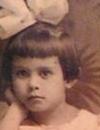
I was drawn to Juan Fernández Álava’s (born in Gijón, 1978) exhibition by the sudden sight of a portrait, forcefully catching my eye and burning itself into my mind. “Algunos Pasajeros” (Some Passengers) is the title of the exhibition, a personal album of portraits (some friends of the artist, others unknown) currently on at La New Gallery.
A lot can be said of a person from their physiognomy, their gestures, their attitude or simply their appearance, the face itself being a clear reflection of one’s identity. Juan Fernández Álava captures unique moments in people’s lives, moments which allow us to appreciate their appearance and also their soul in such a way that they start to exhibit a life of their own, a life enclosed within the frame of the painting. It was Aristotle who once said, “The aim of art is to represent not the outward appearance of things, but their inward significance.”



I have always enjoyed portraits. Just like Juan Fernández Álava, i am fascinated by human beings, I enjoy observing them and imagining the way in which they understand life and what they express. Other artists have caught my eye for the same reason, such as the South African Marlen Dumas (born in 1953) or the American Elizabeth Peyton (1965).
Peyton is always looking to capture beauty — not a static beauty, however, but one which aspires to a Platonic ideal. Her models are usually friends or well-known personalities who have made a name for themselves in the art world and who are admired by the artist, such as actors, musicians, or writers, and the original images are generally taken from magazines or photographs. In the end, it’s all about the love that these characters inspire in her, about the joy of life and of beauty.
According to Peyton, portraits are “invariably about people; they create people, making them look their best and immortalizing them”.



Marlen Dumas also uses photography as a source for her portraits, as she never uses live models. Unlike Peyton or Álava, her work is disturbing, unnerving — her portraits are certainly not flattering. Dumas’ aim through her artwork is to raise social issues related to identity (such as her series on women), prostitution, race, religion, maternity or death.
I love her paper based work, her phantasmagorical work, her faces full of extreme emotion, the tension that seeps out from them and their gaze as a reflection of their psychological state. One appreciates the deep knowledge she has of human beings; I’m disconcerted and uneasy about the way in which she shows how evil the innocence of a child can be, or how she emphasizes the reproductive organs in a show of great impudence, representing the origin but also something unknown, capable of destruction as well as creation.



Just like the Chapman brothers, Marlen also references Goya’s “The Disasters of War”. Sadly, human barbarity seems always all too relevant.
I was previously unaware of Juan Fernández Álava’s work since this is his first exhibition in Madrid, at La New Gallery — recently opened and with a focus on emerging talent. The exhibition consists of a series of small portraits, lending it a very intimate feel. I was drawn to each one of the portraits on display, and I was conceded an interview with the artist to find out more about him and his work:
What are your sources of inspiration and who are your references?
I am more and more conscious of the fact that, in a way, I never really stop painting. It’s not that I spend the whole day in the studio — far from it — but I do spend a lot of time calmly observing the things I enjoy. At the moment, what I observe most of all is people. I don’t analyze them, nor do I attempt to memorize their appearance; I just focus on their variety and their idiosyncrasies, letting all this information soak up in me. I also look at a lot of art, photography, film… which is what naturally makes me want to jump up and start painting there and then, commitments permitting. There are many artists I appreciate, particularly Velázquez, Goya, Alice Neel, Elizabeth Peyton, Alex Katz, Van Gogh, Lucian Freud and Chechu Álava. As for photographers, I like the work of Rineke Dijkstra, Avedon, Ryan McGinley…
Could you define what a portrait is, and what process you follow in order to choose the characters you want to paint?
That’s a very complex question. According to María Moliner, a portrait is the representation of a real person. My portraits are not always of “real” people as I sometimes start from images given to me by a friend, for example. But whatever the source image is, the act of painting transforms the person being represented into someone else, and my job is to follow this someone else until the painting reveals them to me. I believe that the great painters’ best portraits are those in which the model is alive within the painting.
The characters in my paintings all come from very different places. I might ask friends to pose for some photos, or I might come across photos of random people, writers or musicians on the web that I casually save in a folder, or might even do my own version of paintings by other artists...
How would you explain your art?
When I visit the Museo del Prado I sometimes overhear a guide explaining a certain painting to a group of visitors, Goya’s The Third of May 1808 for example, and if I pay attention to the guide I usually hear theories and explanations that are far removed from the intense, non-verbal feelings I get when I observe the same painting as them. There is something physical, fluid, spiritual in all great paintings, that reaches out and grabs you yet you don’t really know why. I hope my work can produce such feelings in others.







